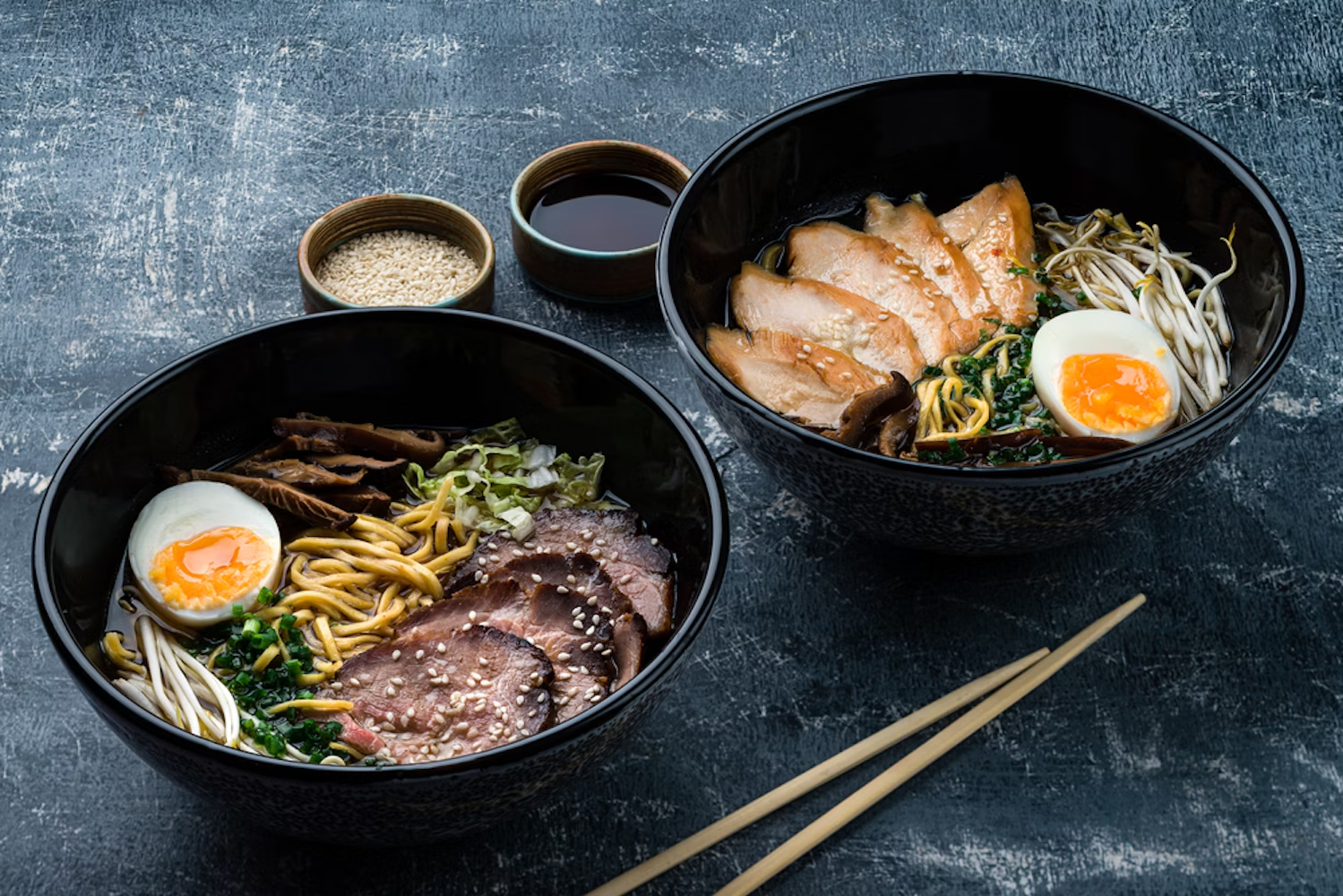Ramen is more than just a bowl of noodles; it’s a culinary experience that has captured the hearts and palates of people around the world. Originating from Japan, ramen has evolved into a beloved dish that is enjoyed in various forms and flavors. This article explores the rich history of ramen, its diverse types, the ingredients that make it unique, and its cultural significance in Japan and beyond.
The Origins of Ramen: A Historical Perspective
To understand ramen, it’s essential to delve into its origins. The history of ramen is somewhat ambiguous, with various theories about how it emerged. Most scholars agree that ramen was influenced by Chinese wheat noodle dishes that were introduced to Japan in the late 19th century.
Early Influences
During the Meiji Era (1868-1912), Japan began to modernize, leading to an influx of foreign cuisine. Chinese immigrants brought their noodle dishes, which quickly gained popularity among the Japanese. These early noodle dishes were often served in a simple broth, laying the groundwork for what would become ramen.
Evolution of Ramen
Over time, Japanese cooks began to adapt the dish to suit local tastes. The first ramen shop, known as “shina soba,” opened in Yokohama in the early 1900s. The name “shina” referred to China, highlighting the dish’s origins. By the 1920s, ramen had gained widespread popularity, leading to the establishment of ramen shops throughout Japan.
Ramen Varieties: A World of Flavors
One of the most appealing aspects of ramen is its versatility. There are several regional variations of ramen, each boasting its unique flavor profile and ingredients. Here, we explore some of the most popular types of ramen.
1. Shoyu Ramen
Shoyu means “soy sauce” in Japanese, and shoyu ramen is characterized by its soy sauce-based broth. This type of ramen has a rich, savory flavor and is often garnished with sliced pork, green onions, and nori (seaweed). It is particularly popular in Tokyo and can be found in many ramen shops across Japan.
2. Miso Ramen
Miso ramen features a broth made from fermented soybean paste (miso), giving it a distinct, hearty flavor. This type of ramen is usually thicker and richer than shoyu ramen, making it especially comforting in colder months. Miso ramen is commonly associated with Hokkaido, a northern island in Japan known for its cold climate and hearty cuisine.
3. Shio Ramen
Shio means “salt” in Japanese, and shio ramen is known for its clear, light broth that is seasoned primarily with salt. This type of ramen tends to have a more delicate flavor, allowing the other ingredients to shine. Shio ramen is often garnished with seafood, vegetables, and a variety of toppings, making it a refreshing option.
4. Tonkotsu Ramen
Tonkotsu ramen is famous for its rich, creamy broth made by simmering pork bones for an extended period. The result is a hearty and flavorful soup that has a distinctive white color and a slightly oily texture. Originating from Fukuoka in Kyushu, tonkotsu ramen has gained immense popularity worldwide, especially in the United States.
5. Tsukemen
Tsukemen is a unique style of ramen where the noodles and broth are served separately. Diners dip the cold noodles into the hot broth before taking a bite. This method allows for a more intense flavor experience and has become a favorite among ramen enthusiasts.
The Essential Ingredients of Ramen
The magic of ramen lies not only in its variety but also in its ingredients. Each component plays a crucial role in creating the perfect bowl of ramen.
1. Noodles
Ramen noodles are typically made from wheat flour, water, salt, and an alkaline mineral called kansui. The presence of kansui gives ramen its unique texture and chewiness. Ramen noodles come in various shapes and thicknesses, from thin and straight to thick and curly, depending on the type of ramen being served.
2. Broth
The broth is the heart of ramen and can be made from a variety of ingredients. Common bases include pork bones, chicken bones, seafood, and vegetables. The choice of broth significantly affects the overall flavor of the dish.
3. Toppings
Ramen is often topped with various ingredients to enhance its flavor and presentation. Common toppings include:
- Chashu: Braised pork belly that is tender and flavorful.
- Menma: Fermented bamboo shoots that add a crunchy texture.
- Nori: Dried seaweed that complements the broth.
- Ajitama: Soft-boiled eggs marinated in soy sauce for an umami kick.
- Green onions: Freshly sliced to add a touch of color and flavor.
4. Seasonings
Seasonings play a vital role in bringing out the flavors of ramen. Common seasonings include soy sauce, miso paste, and various spices. Chefs often experiment with different combinations to create unique flavor profiles.
The Cultural Significance of Ramen in Japan
Ramen holds a special place in Japanese culture and is more than just a meal; it’s a symbol of comfort and community. The dish has evolved into a cultural phenomenon, celebrated in various forms across Japan and worldwide.
Ramen Shops: A Community Gathering Place
Ramen shops, known as “ramen-ya,” are ubiquitous in Japan. These establishments range from small, family-owned shops to large chains. Each ramen-ya has its unique style and recipe, fostering a sense of competition and creativity among chefs.
Ramen Festivals and Competitions
Ramen has become a focal point of culinary festivals and competitions throughout Japan. Events like the Ramen Expo attract thousands of ramen enthusiasts, allowing them to sample different styles and flavors. Competitions often showcase innovative ramen dishes, pushing chefs to experiment with ingredients and techniques.
Ramen in Popular Culture
Ramen has also found its way into popular culture, inspiring countless manga, anime, and films. The portrayal of ramen in these media often highlights its role as a comforting food that brings people together. This representation has contributed to the global fascination with ramen, making it a staple in many countries.
Making Ramen at Home: A Simple Guide
While enjoying ramen at a restaurant is a delight, making it at home can be a rewarding experience. Here’s a simple guide to help you create your own bowl of ramen.
Ingredients
- For the Broth:
- 4 cups chicken or pork broth
- 2 tablespoons soy sauce
- 1 tablespoon miso paste (optional)
- 1 piece of kombu (dried seaweed) for umami flavor
- For the Noodles:
- Store-bought ramen noodles or homemade noodles
- Toppings:
- Soft-boiled eggs
- Chashu (braised pork belly)
- Menma (fermented bamboo shoots)
- Green onions
- Nori (seaweed)
Steps
- Prepare the Broth:
- In a large pot, combine the broth, soy sauce, miso paste, and kombu. Simmer for 20-30 minutes to develop the flavors. Remove the kombu before serving.
- Cook the Noodles:
- Boil the ramen noodles according to package instructions. Drain and rinse with cold water to stop the cooking process.
- Assemble the Bowl:
- Place the cooked noodles in a bowl, ladle the hot broth over them, and arrange your chosen toppings on top.
- Serve:
- Enjoy your homemade ramen with chopsticks and a spoon!
Global Popularity of Ramen
Ramen has transcended its Japanese roots and has become a global phenomenon. Today, you can find ramen shops in major cities around the world, each offering its unique twist on the classic dish.
Ramen in the United States
In recent years, ramen has gained immense popularity in the United States. Many cities now boast ramen shops that serve authentic and innovative dishes. Chefs often experiment with local ingredients and flavors, creating unique fusion dishes that resonate with American palates.
Ramen Around the World
Ramen’s influence has spread to other countries, leading to the creation of various adaptations. In places like South Korea, you’ll find instant ramen with bold flavors, while in Brazil, ramen is often served with tropical ingredients. Each region adds its unique flair to the dish, making ramen a truly global cuisine.
The Future of Ramen
As ramen continues to evolve, chefs and home cooks alike are exploring new flavors, techniques, and ingredients. The future of ramen looks bright, with an emphasis on sustainability and health-conscious choices. Many chefs are experimenting with plant-based broths and noodles, catering to a growing demand for vegetarian and vegan options.
Conclusion
Ramen is not just a dish; it’s a celebration of culture, creativity, and community. From its humble origins to its global popularity, ramen has become a beloved food that brings people together. Whether you enjoy it in a bustling ramen shop or make it at home, each bowl tells a story of tradition and innovation. As we continue to explore the world of ramen, one thing remains certain: it will always hold a special place in our hearts and stomachs.













